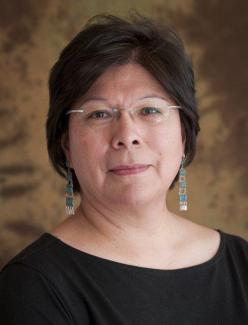
As we reflect on the United Nations Declaration on the Rights of Indigenous Peoples, we must remember and honor the leaders and activists who have long advocated for the rights of Indigenous Peoples. Indigenous activists, whether from their homelands or in Geneva, New York, and other places, have made sacrifices over the past 30-plus years advocating for the Declaration.
Today, we look back and realize the distance we have come in getting the Declaration adopted and the distance we have to go in its implementation. I think about the struggle and history of resistance of Native people in the United States, the stories in my family and community, the contemporary activism that began to emerge in the ‘50s and ‘60s, and the recent resistance at Standing Rock. This is one backdrop among many across the world influencing and shaping the Declaration. The UN Declaration on the Rights of Indigenous Peoples is about our collective histories and lived experiences, our struggles and lives today, and future generations. It is a living document made of history, memory, hope, justice, peace, and spirit.
In this issue of the CSQ, we have included interviews of leaders talking about the Declaration 10 years after its adoption. These individuals are among the many who have worked tirelessly for the rights of Indigenous Peoples and the Declaration. Victoria Tauli-Corpuz, UN Special Rapporteur on the Rights of Indigenous Peoples, speaks to one success of the Declaration in saying, “The more significant development is the strengthening of Indigenous People’s movements, which has been supported by this process of having an international standard... because of these movements they were able to increase their capacities to claim their lands and their resources.” Along those lines, with regard to countries in Asia and Africa, James Anaya, former UN Special Rapporteur on the Rights of Indigenous Peoples writes, “We have seen the Declaration animate Indigenous Peoples themselves to claim those rights even though the governments don’t recognize them as Indigenous.” Mililani Trask, Indigenous rights attorney, echoes these ideas: “One of the biggest changes is that now we have many Indigenous voices globally and regionally that are using the Declaration and integrating it into their work at home.”
At the same time, as Les Malezer says, ”At this stage, 10 years since the Declaration was adopted, I am disappointed that not enough has been done by governments to form partnerships with Indigenous Peoples...Forming partnerships to advance rights is high on the agenda, but not much has been done, not enough.” Grand Chief Edward John states, “The challenges are still far greater than the positive changes that have been made. But, now people are using the Declaration as a very important framework, we need to pursue that...We can’t let the foot off the gas. We need to continue to press it as hard as we can.”
We would all agree there remains a great distance to go. Our demand for our rights, our resiliency, and our self-determination will take us there.
In spirit,
Suzanne Benally
